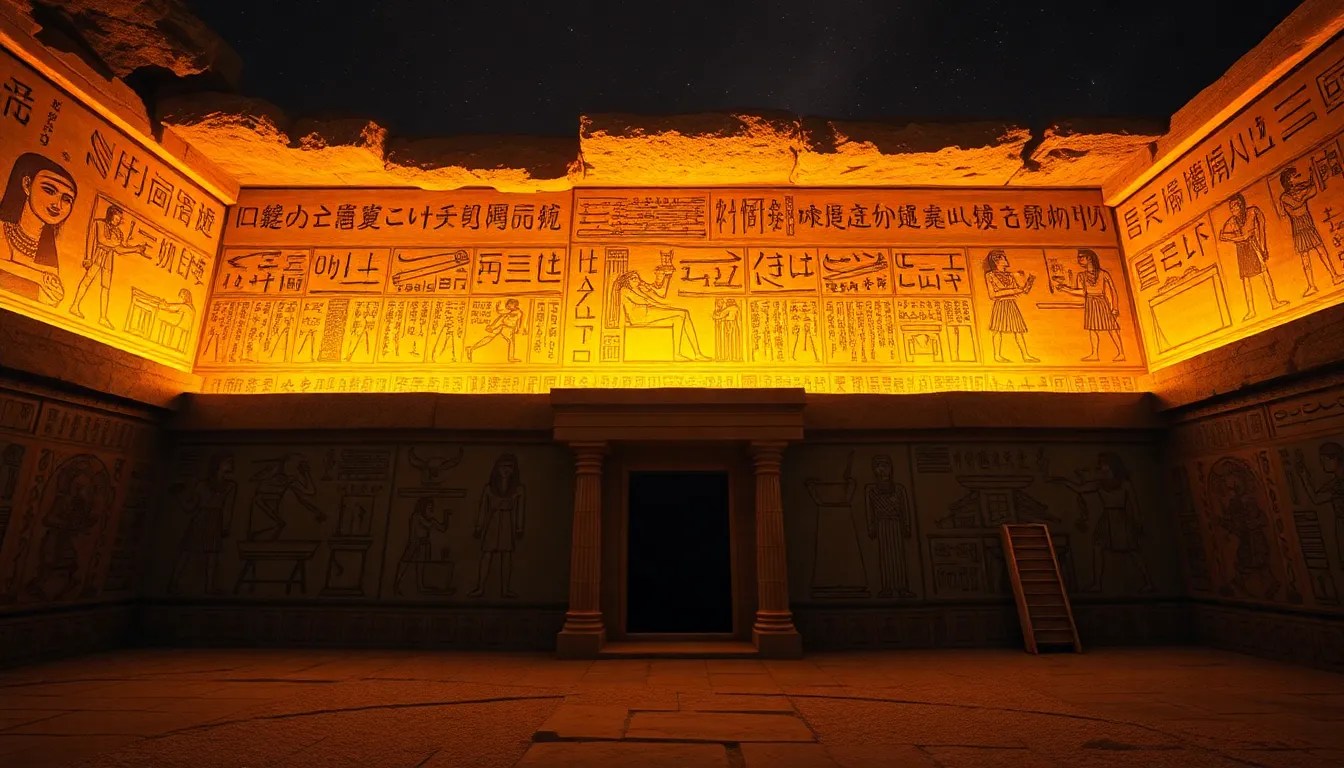The Connection Between Tomb Texts and Ancient Egyptian History
I. Introduction
Tomb texts, also known as funerary texts, are inscriptions found within the tombs of ancient Egyptians that provide valuable insights into their beliefs, practices, and social structures. These texts are crucial for understanding the cultural and historical contexts of ancient Egypt, as they encapsulate the values and ideologies of a civilization that flourished for millennia.
This article aims to explore the significance of tomb texts in ancient Egyptian culture, tracing their historical evolution, types, religious implications, and the insights they provide into the daily life and society of ancient Egyptians. Additionally, it will highlight the archaeological discoveries that have shaped modern interpretations of these texts and their lasting influence on our understanding of ancient Egypt.
II. Historical Context of Tomb Texts
The origins of tomb texts can be traced back to the early dynastic period of ancient Egypt, evolving over centuries as the civilization progressed. Initially, these texts were simplistic in nature, but they became increasingly complex and elaborate, reflecting the evolving beliefs about the afterlife and the role of the deceased.
Key periods in which tomb texts were prevalent include:
- The Old Kingdom (c. 2686–2181 BCE) – Known for the Pyramid Texts.
- The Middle Kingdom (c. 2055–1650 BCE) – Introduction of Coffin Texts.
- The New Kingdom (c. 1550–1070 BCE) – Development of more personalized funerary spells.
The relationship between tomb texts and burial practices is profound. These texts served as guides for the deceased in the afterlife, detailing rituals and providing spells intended to ensure a safe passage and protection from malevolent forces.
III. Types of Tomb Texts
Tomb texts can be categorized into several types, each serving different functions and purposes:
- Hieroglyphic inscriptions: The earliest form of written communication, often found on walls and sarcophagi.
- Coffin texts: A collection of spells inscribed on coffins during the Middle Kingdom, designed to aid the deceased in the afterlife.
- Pyramid texts: The oldest religious texts in the world, inscribed in the burial chambers of pyramids, focusing on the pharaoh’s resurrection.
- Funerary spells: Specific spells intended to invoke protection and guidance for the deceased, often customized for individuals.
IV. The Role of Tomb Texts in Religious Beliefs
Tomb texts are deeply intertwined with ancient Egyptian religious beliefs, particularly regarding the afterlife and resurrection. They reflect the Egyptians’ views on life after death, emphasizing the importance of proper burial and the performance of rituals.
Notable aspects include:
- Connection to the afterlife: Many texts describe the journey of the soul and the necessary steps to achieve eternal life.
- Depictions of gods: Tomb texts often feature numerous deities who provide protection and assistance to the deceased.
- Rituals illustrated: The texts detail various funerary rituals, emphasizing the significance of offerings and prayers.
V. Insights into Daily Life and Society
Beyond their religious significance, tomb texts offer a window into the daily lives of ancient Egyptians. They reflect the social hierarchy, economic practices, and family dynamics within society.
Key insights include:
- Social hierarchy: The status of individuals can be inferred from the complexity and richness of their tomb texts.
- Economic activities: Inscriptions often reference agricultural practices, trade, and the wealth of the deceased.
- Gender roles: Tomb narratives frequently depict the roles of men and women, illustrating family structures and domestic life.
VI. Archaeological Discoveries and Interpretations
Numerous archaeological sites have yielded significant tomb texts that have enhanced our understanding of ancient Egyptian history. Key sites include:
- The Valley of the Kings – Home to numerous royal tombs with rich inscriptions.
- The Tomb of Tutankhamun – Famous for its intact burial and extensive funerary texts.
- The Saqqara Necropolis – Contains some of the oldest pyramids and their associated texts.
Scholars interpret tomb texts within their historical context, examining language, iconography, and archaeological evidence. However, challenges remain, including deciphering damaged texts and debates over varying interpretations of symbolism and meaning.
VII. The Influence of Tomb Texts on Modern Understanding of Ancient Egypt
Tomb texts have greatly contributed to our understanding of ancient Egyptian history and culture:
- Historical chronology: They provide a timeline of beliefs and practices, helping to date other archaeological findings.
- Study of religions: Tomb texts are vital for understanding ancient Egyptian religious practices and their evolution over time.
- Popular culture: The imagery and themes found in tomb texts have influenced modern representations of ancient Egypt in literature, film, and art.
VIII. Conclusion
Tomb texts are a crucial component of ancient Egyptian history, offering profound insights into the civilization’s beliefs, practices, and societal structures. Their significance transcends time, continuing to inform modern scholarship and public interest in this ancient culture.
As research continues, future explorations may uncover new interpretations and understandings of these texts, further enriching our knowledge of ancient Egyptian life and its legacy.
